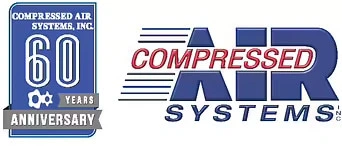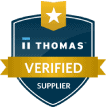Pneumatic equipment relies on air compressors to supply consistently safe, reliable, and clean energy. Air compressors work by mechanically pressurizing air using negative or positive displacement.
Using pistons to compress gas volume, reciprocating compressors are ideal for applications requiring intermittent use. However, rotary screw air compressors are better suited for continuous operation in heavy-duty industrial settings. This is because rotary screw compressors use a different mechanism to supply air than the pistons found in reciprocating compressors.
Known as the fourth utility, compressed air serves many commercial and industrial purposes, from running air tools to supplying breathable, clean air to powering material handling equipment. Using the right type of air compressor will help maximize energy efficiency, as electricity costs can account for up to 65% of total lifetime air compressor expenses.
If your operations need a continuous and dependable source of compressed air, rotary screw compressors are the most cost-effective, efficient solution.
Learn more about the individual components of these compressors in this interactive infographic.
1. Inlet Filter
The rotary screw air compressor’s inlet filter (1) and inlet valve (2) allow for the passage of air.
2. Inlet Valve
The rotary screw air compressor’s inlet filter (1) and inlet valve (2) allow for the passage of air.
3. SIGMA Profile Airend
Air travels from the filter and valve to the SIGMA Profile airend (3), which can reduce energy consumption by as much as 20%.
4. IE4 Drive Motor
A high-efficiency electric motor (4) drives the compressor’s SIGMA Profile airend (3).
5. Fluid Separator Tank
The compressor’s fluid separator tank (5) removes the injected cooling oil from the air during compression.
6. Oil Separator Cartridge
The system moves the air into the two-stage oil separator cartridge (6).
7. Minimum Pressure Check Valve
The air then moves into the minimum pressure check valve (7) and then the compressed air aftercooler (8).
8. Compressed Air Aftercooler
The air then moves into the minimum pressure check valve (7) and then the compressed air aftercooler (8).
9. KAESER Centrifugal Separator
The integrated centrifugal separator (9) removes any condensation from the compressed air that accumulates after the cooling process.
10. ECO-DRAIN Condensate Drain
The add-on ECO-DRAIN condensation drain (10) drains the condensate from the system.
11. Compressed Air Connection
The compressed air connection (11) allows the compressed air to exit the system and travel into the fluid cooler.
12. Fluid Cooler
The system’s fluid cooler (12) removes from the cooling oil any heat produced during the compression process.
13. Fluid Motor
A fan with a fan motor (13) dissipates the heat into the ambient air around the compressor.
14. ECO Fluid Filter
The compressor’s ECO fluid filter (14) cleans the cooling oil to prepare it for future compression processes.
15. Electronic Thermo Management
To maintain the lowest attainable operating temperatures during compression, the system uses an Electronic Thermo Management system (15).
16. Control Cabinet with Integrated SFC Frequency Converter
The control cabinet (16) contains the compressor’s SIGMA CONTROL 2 compressor controller (17) and, in some models, the star-delta starter or frequency converter (SFC).
17. SIGMA CONTROL 2 Compressor Controller
The control cabinet (16) contains the compressor’s SIGMA CONTROL 2 compressor controller (17) and, in some models, the star-delta starter or frequency converter (SFC).
18. Add-on Refrigeration Dryer
With some models, you can add a refrigeration dryer (18) that removes all moisture by reducing the compressed air temperature to 3 °C.










